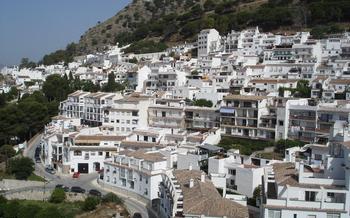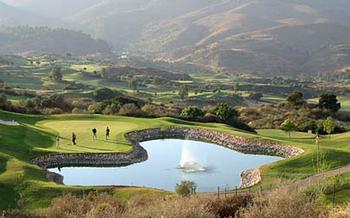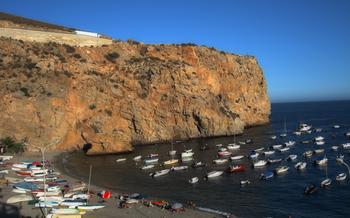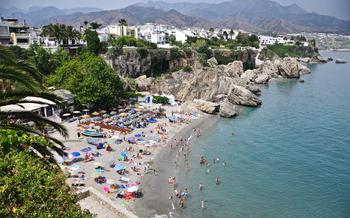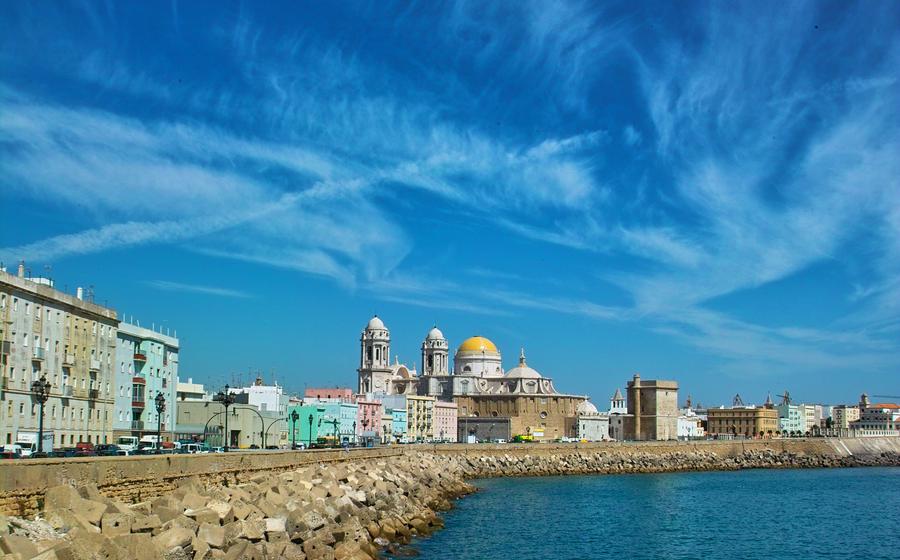
Whale and dolphin watching in the Strait of Gibraltar (from Tarifa)
- A Marine Paradise
- Whale and Dolphin Species
- Tour Options
- Booking Your Tour
- What to Expect
- Essential Gear
- Respecting Wildlife
- Safety First
- Capture the Moment
- Motion Sickness Tips
- Local Cuisine
- Sustainable Tourism
- Cultural Experiences: Unveiling the Heritage of Tarifa
- Photography Tips: Capturing the Essence of Whales and Dolphins
- Insider Tip: Unveiling the Secrets of the Strait
A Marine Paradise
The Strait of Gibraltar, located between Spain and Morocco, is a marine paradise teeming with diverse marine life. This unique geographical feature, where the Atlantic Ocean meets the Mediterranean Sea, creates a rich ecosystem that supports a variety of whale and dolphin species. The Strait's strategic location makes it a crucial feeding, breeding, and migratory ground for these magnificent creatures.
The concept of cetacean watching, the responsible and ethical observation of whales and dolphins in their natural habitat, has gained popularity as a sustainable way to learn about and appreciate these marine mammals. Whale and dolphin watching tours in the Strait of Gibraltar adhere to strict guidelines to minimize disturbance to the animals and ensure their well-being. Join a tour and witness the incredible biodiversity of the Strait, where you can observe these majestic creatures in their natural environment, creating memories that will last a lifetime.
Whale and Dolphin Species
The Strait of Gibraltar is home to a diverse array of whale and dolphin species, making it a prime destination for cetacean enthusiasts. Among the most commonly sighted species are the playful common dolphin, known for its acrobatic leaps and graceful movements. The majestic bottlenose dolphin, with its distinctive curved dorsal fin, is also a frequent visitor to the Strait. For those seeking a truly awe-inspiring encounter, the mighty fin whale, the second-largest animal on Earth, can be spotted breaching the water's surface.
Other notable species that grace the Strait's waters include the striped dolphin, with its striking black and white markings, and the shy Risso's dolphin, recognizable by its blunt head and white scars. For a glimpse into the realm of giants, keep an eye out for the sperm whale, the largest toothed whale in the world, known for its deep dives and complex social structure. With luck, you might even encounter the elusive orca, the apex predator of the ocean, renowned for its intelligence and cooperative hunting strategies.
The Strait of Gibraltar serves as a vital feeding, breeding, and migratory ground for these marine mammals. The abundant food resources, including fish, squid, and crustaceans, attract a diverse array of species to the area. The Strait's unique geography, with its deep waters and sheltered coves, provides a safe haven for mothers and their calves, making it an ideal breeding ground for many cetacean species. Additionally, the Strait serves as a migratory corridor for whales and dolphins moving between the Atlantic Ocean and the Mediterranean Sea, offering a chance to witness the awe-inspiring spectacle of their seasonal journeys.
Tour Options
Tarifa offers a variety of whale and dolphin watching tours to suit different preferences and budgets. Group tours are a popular choice, providing an affordable and sociable way to experience the wonders of the Strait of Gibraltar. These tours typically depart from the harbor and last for around two to three hours. Private charters offer a more exclusive experience, allowing you to customize your itinerary and spend more time with the marine mammals. For those interested in learning more about the research and conservation efforts in the area, research-oriented tours provide a unique opportunity to contribute to scientific studies and gain insights into the lives of these fascinating creatures.
When choosing a tour, consider the duration, departure times, and prices. Tours typically depart in the morning or afternoon, and prices vary depending on the type of tour, the duration, and the time of year. The best time of year for whale and dolphin watching is from April to October, when the weather is generally calm, and the waters are teeming with marine life.
Booking Your Tour
To ensure a smooth and memorable whale and dolphin watching experience, booking your tour in advance is highly recommended, especially during the peak season (June to September) when demand is high. When choosing a tour operator, prioritize reputable companies that adhere to responsible whale and dolphin watching practices. Look for operators that are certified by reputable organizations such as the World Cetacean Alliance or the Dolphin and Whale Conservation Society. These certifications indicate that the operator follows ethical guidelines and takes measures to minimize disturbance to the animals.
Before booking, compare different tour operators by reading reviews, checking their safety record, and inquiring about their policies regarding animal welfare. Don't hesitate to ask questions about the tour itinerary, boat size and facilities, and the qualifications of the guides. If you have specific interests, such as photography or research, inquire about specialized tours that cater to your needs.
For private tours or tours with specific requirements, it's advisable to book well in advance to secure your desired date and time. Private tours offer a more personalized experience, allowing you to customize the itinerary and focus on your interests. They also provide an opportunity for in-depth discussions with knowledgeable guides who can share their expertise and insights about the marine life in the Strait of Gibraltar.
What to Expect
Whale and dolphin watching tours typically begin with a safety briefing by the tour guide, covering important information such as safety procedures, wildlife regulations, and the itinerary for the day. Once the boat sets off, the search for whales and dolphins begins. The tour guide will use their expertise and knowledge of the area to navigate the waters where marine life is most likely to be found.
When a whale or dolphin is spotted, the boat will approach slowly and carefully, following responsible whale and dolphin watching guidelines. The tour guide will provide commentary on the species, their behavior, and the importance of conservation. Visitors will have the opportunity to observe the animals in their natural habitat, taking photos and videos to capture the memories.
The duration of the tour and the number of sightings can vary depending on factors such as weather conditions, the time of year, and the behavior of the animals. However, visitors can expect to spend a significant amount of time observing these magnificent creatures in their natural environment.
In addition to whales and dolphins, visitors may also encounter other marine life during the tour, such as sea turtles, sharks, and seabirds. The tour guide will provide information about these animals and their role in the marine ecosystem.
Essential Gear
When embarking on a whale and dolphin watching tour, packing the right gear is crucial for a comfortable and enjoyable experience. Start with comfortable clothing that allows for freedom of movement, as you'll likely be spending several hours on the boat. Layer up to adjust to changing weather conditions, and don't forget a hat and sunglasses to protect yourself from the sun.
Sun protection is essential, so pack sunscreen with a high SPF, lip balm, and a pair of polarized sunglasses to reduce glare and enhance your viewing experience. A reusable water bottle is a must to stay hydrated, especially in the warm Mediterranean climate.
For capturing those unforgettable moments, bring a camera with a long lens, preferably a telephoto lens with a focal length of at least 200mm, to get close-up shots of the marine life. A fast shutter speed is crucial to freeze the action of leaping dolphins or breaching whales.
To protect your camera from splashes or accidental drops, invest in a waterproof case or bag. Binoculars are also a great addition to your gear, allowing you to observe the animals from a distance without disturbing them.
If you're prone to motion sickness, pack some over-the-counter medication or natural remedies like ginger or peppermint to keep queasiness at bay. Seasickness patches can also be effective in preventing symptoms.
Respecting Wildlife
Whale and dolphin watching should always be done responsibly and ethically. These animals are wild creatures that deserve our respect and protection. Tour operators are required to follow strict guidelines to minimize disturbance to the animals. These guidelines include maintaining a safe distance, avoiding sudden movements, and not swimming with the animals. It is important to follow these guidelines and be mindful of your actions when around whales and dolphins.
Noise and pollution can also have a negative impact on marine life. Be sure to keep your voice down and avoid dropping any trash into the water. By being respectful of the animals and their environment, we can help ensure that whale and dolphin watching remains a sustainable and enjoyable activity for generations to come.
Here are some tips for respecting wildlife during your whale and dolphin watching tour:
- Maintain a safe distance from the animals.
- Avoid sudden movements or loud noises.
- Do not swim with the animals.
- Keep your voice down and avoid dropping any trash into the water.
- Be mindful of the animals' behavior and movements.
- If you see an animal acting distressed, alert your tour guide immediately.
Safety First
Whale and dolphin watching tours in the Strait of Gibraltar are generally safe and well-regulated. Tour operators prioritize the safety of their passengers and adhere to strict safety protocols. They provide life jackets to all participants and conduct thorough safety briefings before each tour. Trained crew members are on board to ensure the well-being of everyone on board.
While the tours are generally safe, there are potential risks associated with any activity on the water. Rough seas or unpredictable animal behavior can occur, but tour operators are prepared to manage these situations effectively. They monitor weather conditions closely and may adjust the route or cancel the tour if necessary. They also train their crew to respond to any emergencies that may arise.
To ensure a safe and enjoyable experience, it is important for visitors to follow the instructions of the tour guides and stay within designated areas. By adhering to the safety guidelines and being mindful of their surroundings, visitors can minimize any risks and fully enjoy the wonders of whale and dolphin watching in the Strait of Gibraltar.
Capture the Moment
The opportunity to photograph and film whales and dolphins in their natural habitat is a dream for many wildlife enthusiasts. To capture stunning images, consider using a camera with a long lens, a fast shutter speed, and a high ISO setting. Panning shots can help convey the sense of movement, while a tripod can stabilize your camera for sharper images. Experiment with different angles and perspectives to create unique and dynamic compositions.
When editing your photos and videos, respect the privacy of the animals and other tour participants. Avoid using flash or disturbing the animals in any way. Share your images and videos responsibly, ensuring that they promote ethical whale and dolphin watching practices and raise awareness about the importance of marine conservation.
Motion Sickness Tips
Motion sickness is a common concern for those embarking on whale and dolphin watching tours. However, there are several measures you can take to prevent and manage this unpleasant condition.
Before the tour, eat a light meal that is easy to digest. Avoid heavy, greasy foods, as they can contribute to nausea. Similarly, limit your intake of alcohol and caffeine, as these substances can also exacerbate motion sickness.
Once on the boat, find a comfortable spot where you can get plenty of fresh air. If you start to feel queasy, focus on the horizon and avoid reading or looking at your phone. Over-the-counter motion sickness medication can also be effective, but be sure to take it well before the tour begins.
Some people find that natural remedies, such as ginger or peppermint, can help alleviate motion sickness. You can take ginger supplements or chew on ginger candy, or sip on peppermint tea or suck on peppermint lozenges.
If you are prone to severe motion sickness, consider talking to your doctor about prescription medication. They can recommend an effective medication that will allow you to fully enjoy your whale and dolphin watching experience.
Local Cuisine
Tarifa's culinary scene is a delightful fusion of traditional Andalusian flavors and fresh seafood, reflecting its rich cultural heritage. Indulge in the local specialty of atún rojo (bluefin tuna), renowned for its delicate flavor and prized as one of the finest tuna varieties in the world. Savor the crispy delight of pescadito frito (fried fish), a staple dish showcasing the region's abundant marine bounty. Refresh your palate with a chilled bowl of gazpacho, a classic cold tomato soup that embodies the essence of Andalusian cuisine.
Tarifa's charming streets are lined with inviting restaurants and bustling markets, each offering a taste of the local culinary treasures. Whether you prefer a casual beachfront eatery or a traditional Spanish restaurant, you'll find plenty of options to satisfy your cravings. Be sure to sample the local wines, produced in the nearby vineyards of Jerez, which perfectly complement the region's cuisine.
As you savor the flavors of Tarifa, don't miss the opportunity to engage with the locals and learn about the stories behind the dishes. Ask your server about the history of a particular recipe or seek recommendations for hidden culinary gems. Embracing the local cuisine is an essential part of experiencing the vibrant culture of Tarifa.
Sustainable Tourism
As you embark on your whale and dolphin watching tour, embrace the principles of responsible tourism. Choose tour operators that prioritize sustainability, utilizing eco-friendly boats and actively supporting conservation initiatives. Minimize your environmental impact by opting for reusable water bottles, avoiding single-use plastics, and respecting the delicate marine ecosystem. Engage with local communities, respecting their traditions and supporting small businesses. Together, we can ensure the long-term health of the marine environment and the vibrant culture of Tarifa.
Cultural Experiences: Unveiling the Heritage of Tarifa
Beyond the breathtaking marine encounters, Tarifa boasts a rich cultural heritage, a tapestry woven from diverse threads of history and tradition. Dive into the heart of the old town, where narrow cobbled streets lead to charming plazas, each with its own unique story to tell. Explore the local markets, a vibrant kaleidoscope of colors and aromas, where you can haggle for traditional handicrafts, fresh produce, and local delicacies.
Immerse yourself in the fascinating history of Tarifa, a strategic crossroads that has witnessed the rise and fall of empires. Visit the imposing Castillo de Guzmán, a majestic fortress that once guarded the shores from invaders, and uncover the tales of battles and conquests that shaped the town's destiny.
Tarifa is also a melting pot of cultures, a place where the flavors of Andalusia, Morocco, and the wider Mediterranean blend seamlessly. Indulge in the local cuisine, a tantalizing fusion of fresh seafood, aromatic spices, and traditional recipes. Savor the exquisite atún rojo (bluefin tuna), a local delicacy renowned for its rich flavor and velvety texture.
To fully embrace the cultural spirit of Tarifa, join in the lively festivals and events that take place throughout the year. Witness the vibrant Feria de Tarifa, a week-long celebration of music, dance, and traditional costumes, or immerse yourself in the infectious energy of the Carnaval de Tarifa, a riot of color, music, and revelry.
Tarifa's cultural tapestry is an intricate masterpiece, waiting to be unraveled by curious travelers. Embrace the opportunity to explore its hidden gems, engage with its friendly locals, and create memories that will last a lifetime.
Photography Tips: Capturing the Essence of Whales and Dolphins
To elevate your whale and dolphin watching experience, consider these photography tips:
-
Capture the Graceful Movement: Use a fast shutter speed to freeze the motion of whales and dolphins as they breach, leap, or dive. This will create sharp and dynamic images that convey the energy and fluidity of these majestic creatures.
-
Play with Angles and Perspectives: Experiment with different angles and perspectives to create unique and captivating shots. Get low to capture the animals from a worm's-eye view, or climb to a higher vantage point for an aerial perspective.
-
Compose a Cohesive Story: Think about the narrative you want to convey with your photographs. Consider the background, lighting, and composition to create a series of images that tell a compelling story about your whale and dolphin encounter.
-
Embrace Post-Processing Magic: Use post-processing software to enhance the colors, contrast, and sharpness of your photos. Experiment with different editing techniques to create a cohesive and visually appealing portfolio of your whale and dolphin watching experience.
Insider Tip: Unveiling the Secrets of the Strait
For an unforgettable whale and dolphin watching experience, venture beyond the typical tourist routes and explore the hidden coves and inlets of the Strait of Gibraltar. One such hidden gem is the secluded bay of Cala del Moral, known for its calm waters and diverse marine life. Join a small-group tour with a passionate local guide who will take you to this secret spot, away from the crowds, where you can witness the wonders of the underwater world in peace and tranquility. Keep an eye out for playful dolphins frolicking in the waves, majestic whales breaching the surface, and the occasional glimpse of a rare sea turtle. This insider tip will lead you to an extraordinary encounter with the marine giants of the Strait, creating memories that will last a lifetime.

